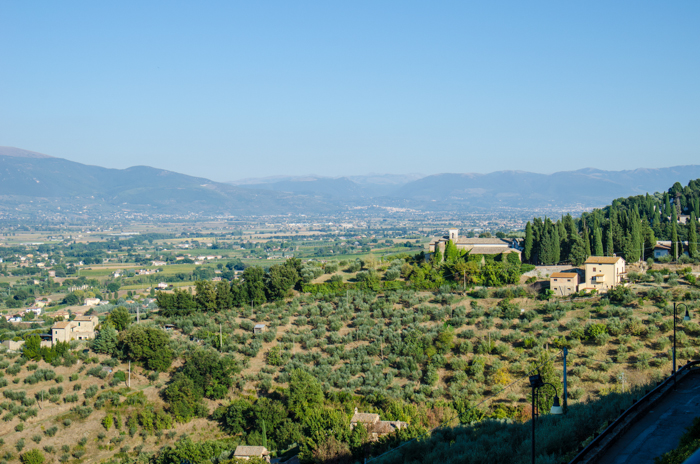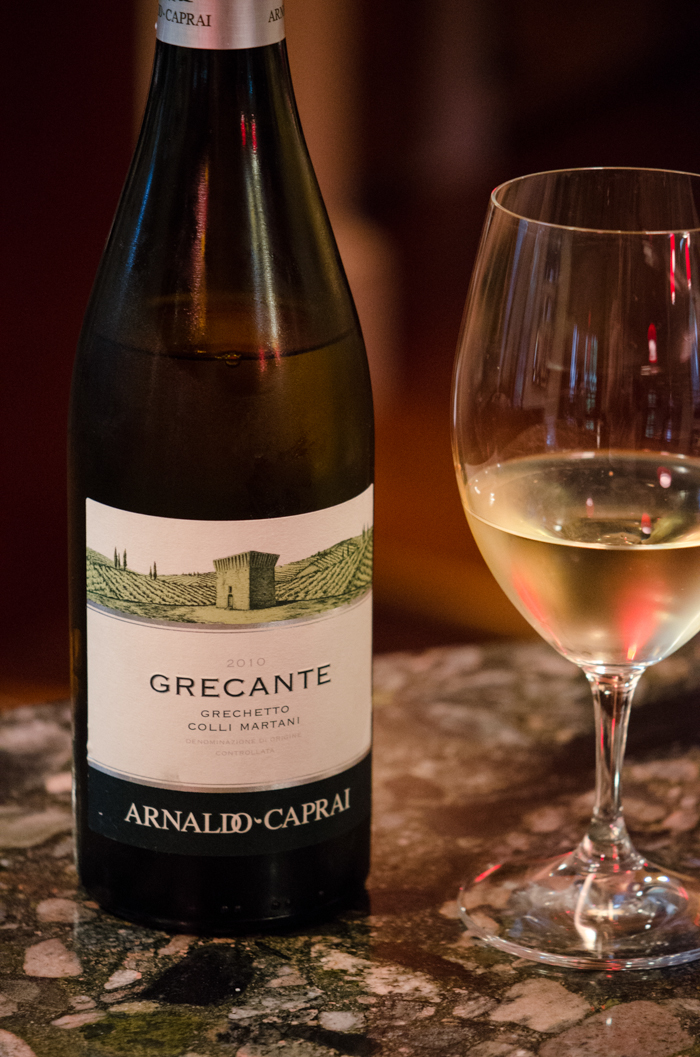The Colli Martani DOC lies in the broad basin south of Perugia, north-east and south-west of the mountains that run from Bettona to Massa Martana, the Colli Martani. This land, on the left bank of the Tiber river is rich in evidence of wine-production in the area, first by the Etruscans and then the Romans.


The white wines in this region include a Colli Martani Bianco based on Trebbiano. This wine must consist of 85% Trebbiano, with the remaining 15% made up of Trebbiano Spoletino, Grechetto, Malvasia bianca di Candia, Malvasia, Garganega and Verdicchio, alone or jointly. It is pale yellow in color, with a slightly vinous aroma, dry, tart and fruity. Great with lighter pasta dishes, chicken salad, fish and vegetables.
The white Colli Martani Grechetto must have at least 85% Grechetto; with Trebbiano, Spoletino, Malvasia & Malvasia di Candia, Garganega & Verdicchio, alone or jointly, making up the remainder. This wine may be labelled with the geographical sub-denomination 'di Todi', whenever obtained exclusively from grapes produced in the township of Todi. Also pale yellow, with a delicate perfume, velvety, dry, with a slightly bitter aftertaste. Serve with hot antipasti, and spicy regional pasta dishes such as rigatoni alla norcina.
Colli Martani Rossa is a Sangiovese based wine. Consisting of at minimum Sangiovese, with the remaining 15% made up of Canaiolo, Ciliegiolo, Barbera, Merlot, Montepulciano, Trebbiano, Trebbiano Spoletino, Grechetto, Malvasia, Malvasia di Candia, Garganega and Verdicchio, alone or jointly. The white grapes must not exceed 10% of the overall total of blending grapes. This wine must undergo mandatory aging for at least a year. If it is aged for two years, of which at least one in oak casks, it can be labelled Riserva. Ruby red in color when young, the Rosso wines will exhibit hints of orange and garnet with age. A characteristic fruity nose, with a dry, well-balance palate, slightly tannic and nicely bitter. Serve with hearty pasta dishes, roast pork, aged cheeses.


